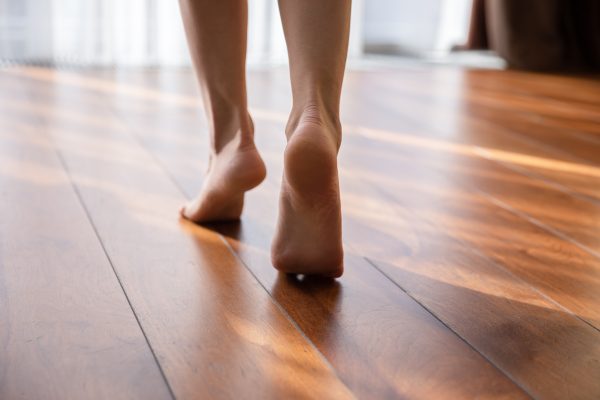Are cracks in your feet causing you intense discomfort? Not only can cracked heels hurt with everyday walking or when wearing certain shoes, but they’re also not a pleasant sight to see!
Fix your cracked heel problem once and for all with some advice straight from the podiatrists at Foot & Ankle Group:
What Causes Cracked Heels?
Generally, the most common cause of cracked heels is overly dry skin on your feet. Once skin becomes dry, it’s less elastic— and without the aid of a moisture barrier, is more susceptible to cracking or developing deeper fissures.

Those who live in naturally drier climates tend to experience this foot problem, as well as those with pre-existing skin conditions like eczema or dermatitis. Cracked heels can also be a warning sign of a fungal infection, specifically Athlete’s foot, or other infections picked up when getting a pedicure or from walking around barefoot.
Additionally, other conditions can cause skin dryness, like hypothyroidism, Sjögren’s syndrome, and others.
1. Keep Your Feet Clean
When your skin cracks, it allows entry of contaminants into your body— leaving you vulnerable to infections. The very first thing you should do to treat your cracked heels is to be mindful of keeping your feet clean. This means no walking around barefoot, even at home. Read more about the risks of walking barefoot.
Clean your cracked heels by washing daily with a hydrating skin cleanser. It’s important to check the ingredients on your cleaner to ensure it doesn’t contain chemicals that would further dry or irritate your skin. Look for cleaners that are cream-based and use natural antibacterial or anti-inflammatory ingredients.
2. Soak & Exfoliate
If you have thick calluses that are causing you pain when walking, it can help to remove some of this excessive dead skin. But be cautious not to go crazy! Calluses help to cushion your feet, and removing too much of this toughened skin can not only cause rubbing in your shoes or pain when walking, but also lead to infection.
Avoid using the cheese-grater type foot files or going to a pedicurist where they reuse pumice stones, which can carry bacteria in their porous shape. Soak your feet at home in a soothing bubble bath and then gently exfoliate with a dull file. Better yet, have them professionally filed by a podiatrist, who will be careful to avoid causing micro-abrasions in your skin that invite fungus and bacteria.
3. Seal Deep Cracks with Liquid Bandage
If you have deep cracks that are extremely painful or even bleed, it’s important to bandage these like you would any other open wound to avoid infection. But because of the location on your feet, it’s hard to wrap them in an ace bandage or with gauze, which can easily slip inside a shoe.
Instead, properly clean and moisture the wounds and seal them with a liquid bandage to give them the right environment to heal.
4. Find the Right Moisturizer
Your feet may be dry because you were never moisturizing this area before or using the wrong moisturizer, which could ironically be causing further drying issues. Many moisturizer manufacturers lace their lotions with ingredients that actually dry the skin, in hopes that the purchaser will need to keep buying more lotion over time.
Choose a moisturizing heel balm or a lotion/cream that’s recommended for dry, cracked skin. Look for ingredients that have moisturizing, healing properties for your skin like vitamins A and E.
CeraVe Healing Ointment is a popular choice for its ceramides, which help to restore your skin’s barrier and because it contains hyaluronic acid to help your skin retain moisture. If you have severely cracked feet, a podiatrist could prescribe prescription-grade creams for improved relief.
Be mindful of the products you use everyday in the shower too, like your shampoo, conditioner and body wash/soap, which naturally drain down to your feet under the showerhead and could be causing irritation.
5. Consider Natural Moisturizing
While an over the counter or prescription cream is good to apply and wear on-the-go, consider using some natural moisturizers while lounging at home.
A few natural remedies may include shea butter or paraffin wax to seal in moisture. Other items like honey, bananas, and even oatmeal are known for their soothing qualities and can help to reduce inflammation and moisturize. Check out this DIY Foot Salve for Cracked Heels from WellnessMama, which is made up of calming coconut oil, beeswax, peppermint and more to soothe your painful feet.
Get a Professional Opinion
If you’ve been trying to treat your cracked feet at home for a few weeks now and are still experiencing pain or discomfort, it might be time to see a podiatrist.
A professional can detect signs of infection or offer the right regimen to heal your cracked heels permanently.
Give us a call to set up an appointment at 239.936.5400, today.
Categorized in: Blog
Comments are closed